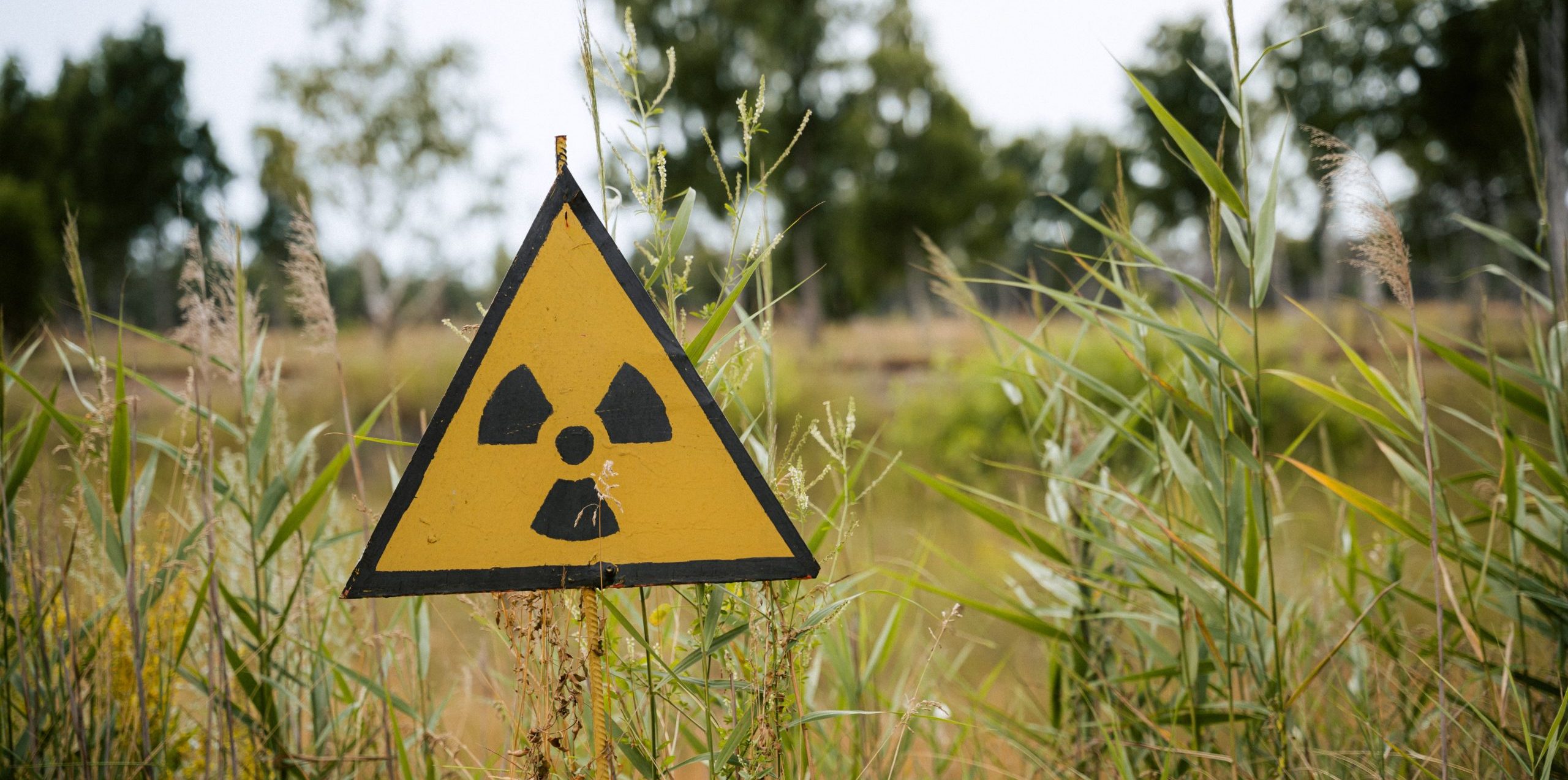 Richard Armitage is a GP and Public Health Specialty Registrar, and Honorary Assistant Professor at the University of Nottingham’s Academic Unit of Population and Lifespan Sciences. He is on twitter: @drricharmitage
Richard Armitage is a GP and Public Health Specialty Registrar, and Honorary Assistant Professor at the University of Nottingham’s Academic Unit of Population and Lifespan Sciences. He is on twitter: @drricharmitage
Following Russia’s invasion of Ukraine, and President Putin’s gesturing towards his nuclear arsenal,1 renewed concerns over the cataclysmic dangers to public health posed by the use of thermonuclear weapons have been raised.2 However, nuclear technology operating in conflict zones gets less attention. The mismanagement, neglect, and intentional assault of nuclear power plants, which play no role whatsoever in the creation of nuclear weapons, risk nuclear accidents which also have severe and expansive consequences for global public health.
The Zaporizhzhia plant in southeast Ukraine, the largest nuclear plant in Europe, has been under control of Russian forces since early March 2022, while its nuclear operations continue to be managed by Ukrainian staff.3 The plant was described on 02 August 2022 as being “completely out of control” by the Director-General of the International Atomic Energy Agency (IAEA) due to a catalogue of safety violations including disruption to the plant’s physical integrity (secondary to on-going hostilities), interruption of supply chains vital to its safe functioning, and unreliable communication channels between IAEA and operational staff.3 In addition, concerns are mounting over the security of the plant’s nuclear material, adding to the urgent need for an IAEA visit to allow the repairs and inspections necessary to avert nuclear accident.3 The situation is similar to, but more severe, prolonged and intractable than, that of the Chernobyl nuclear plant in the conflict’s early stages, which was temporarily under control of invading Russian forces,4 and could seemingly be replicated across any of Ukraine’s 15 nuclear reactors within its four active nuclear power plants.5 While the Kremlin has recently announced that UN officials will be granted permission to visit and inspect the Zaporizhzhia plant, President Putin’s history of fulfilling his publicly-declared intentions with regard to the conflict is far from perfect, while active fighting continues to rage around the nuclear facility, meaning this urgently required and time-critical inspection is far from guaranteed.6
A nuclear accident at Zaporizhzhia amidst on-going kinetic warfare would likely create a public health emergency substantially greater than that generated by the 1986 Chernobyl disaster…
A nuclear accident at Zaporizhzhia amidst on-going kinetic warfare would likely create a public health emergency substantially greater than that generated by the 1986 Chernobyl disaster, the impacts of which were manifested over thousands of square kilometres across Continental and Western Europe.7 This would include the immediate and long-term effects of widespread radioisotope exposure (due to direct contact or environmental contamination with such elements), the mental and psychological effects of witnessing, escaping, and worrying over the transgenerational effects of a major nuclear accident, and the interruption of routine healthcare as a consequence of the disaster (triggered by health infrastructure destruction, evacuation of health professionals, and an overwhelming influx of patient demand). These impacts would sit atop the plethora of existing and deepening health consequences generated by the on-going conflict, generating a humanitarian and public health crisis of enormous proportions.
Arguably more alarmingly, interruption to and commandeering of the operation of nuclear facilities is now possible even in the absence of physical aggression, as demonstrated by the effects of the malicious Stuxnet computer worm on the Iranian nuclear program. This cyberattack, first discovered in 2010 but thought to have been developed from 2005, digitally targeted vital centrifuges central to the enrichment of nuclear material, and caused a critical malfunction and postponement of the program.8 The example of Stuxnet – the world’s first cyberattack on nuclear facilities – showed that activities involving nuclear technology are not exclusively threatened by kinetic forces, and that the destructive potential of interrupting their functioning is now readily available to much smaller groups including state-sponsored terrorists and individuals actors.9
…healthcare and public health professionals must not only advocate against nuclear weapons, but include within the scope of their concern the security of nuclear plants in conflict settings.
The situation in Zaporizhzhia reveals the vulnerability of nuclear power plants located in conflict settings, and the potentially devasting health consequences of their reckless mis-management. Accordingly, healthcare and public health professionals must not only advocate against nuclear weapons, but include within the scope of their concern the security of nuclear plants in conflict settings. The Chernobyl disaster justifies this concern to be of a truly global nature, due to the potential of prevailing winds and precipitation patterns to distribute the harmful effects of radioisotopes over thousands of square kilometres and far beyond the ground zero of a nuclear accident. In addition, any of the world’s 440 nuclear reactors, operating in 33 countries including Russia and China,10 could one day find themselves within the theatre of war, and are all therefore vulnerable to conflict-driven effects. Accordingly, the global healthcare community must collectively raise the alarm of these dangers at hand, in a unified voice akin to that of the International Physicians for the Prevention of Nuclear War with regard to disarmament of the world’s nuclear weapon arsenal. The international collective of general practice professionals should contribute their significant voice to this effort, since the enormous number of patients who stand to be impacted by a nuclear accident, both in the immediate term and far into the future, would largely be dealt with by primary care work forces in managing both the acute and chronic psychological consequences, and in recognising the downstream physical health impacts, of such a catastrophe. In a similar manner to which it advocates for action to mitigate the health impacts of climate change, the RCGP should leverage its position as a representative body of publicly-trusted professionals to pressurise the relevant international actors to facilitate an urgent inspection of the Zaporizhzhia plant in order to protect the health of patients across a potentially enormous geographical expanse.
In the immediate-term, bodies representing communities of healthcare professionals should voice a united call for an urgent IAEA visit to the Zaporizhzhia plant by appealing to UN diplomats and to Russia and Ukraine directly. The long-term goal should be to foster social, warfare and political norms that prioritise the safeguarding of nuclear power plants in hostile environments, driven by deep concern for global public health outcomes, regardless of their geographical location.
References
- BBC News. Ukraine invasion: Putin puts Russia’s nuclear forces on ‘special alert.’ 28 February 2022. https://www.bbc.co.uk/news/world-europe-60547473 [accessed 25 August 2022]
- R Armitage. Nuclear war: the greatest threat to global public health. Public Health June 2022; 207: e3-e4. DOI: 10.1016/j.puhe.2022.03.008
- EM Lederer. UN nuclear chief: Ukraine nuclear plant is ‘out of control.’ AP News. https://apnews.com/article/russia-ukraine-science-accidents-d2e0077af104f2692b76f737c58e1984 [accessed 25 August 2022]
- IAEA. IAEA Chief Grossi to Head Assistance Mission to Ukraine’s Chornobyl Nuclear Power Plant Next Week. 22 April 2022. https://www.iaea.org/newscenter/pressreleases/iaea-chief-grossi-to-head-assistance-mission-to-ukraines-chornobyl-nuclear-power-plant-next-week [accessed 25 August 2022]
- World Nuclear Association. Nuclear Power in Ukraine. June 2022. https://world-nuclear.org/information-library/country-profiles/countries-t-z/ukraine.aspx [accessed 25 August 2022]
- M Murphy and L Sands. Ukraine war: Russia to allow inspectors at Zaporizhzhia nuclear plant – Putin. BBC News 20 August 2022. https://www.bbc.co.uk/news/world-europe-62613013 [accessed 25 August 2022]
- UN. Chernobyl: The true scale of the accident. 06 September 2005. https://press.un.org/en/2005/dev2539.doc.htm [accessed 25 August 2022]
- JP Farwell and R Rohozinski. Stuxnet and the Future of Cyber War. Survival 28 January 2011; 53(1): 23-40. DOI: 10.1080/00396338.2011.555586
- JS Nye. Nuclear Lessons for Cyber Security? Strategic Studies Quarterly Winter 2011; 5(4): 18-38.
- World Nuclear Association. Plans For New Reactors Worldwide. July 2022. https://world-nuclear.org/information-library/current-and-future-generation/plans-for-new-reactors-worldwide.aspx [accessed 25 August 2022]
Featured photo by Kilian Karger on Unsplash






